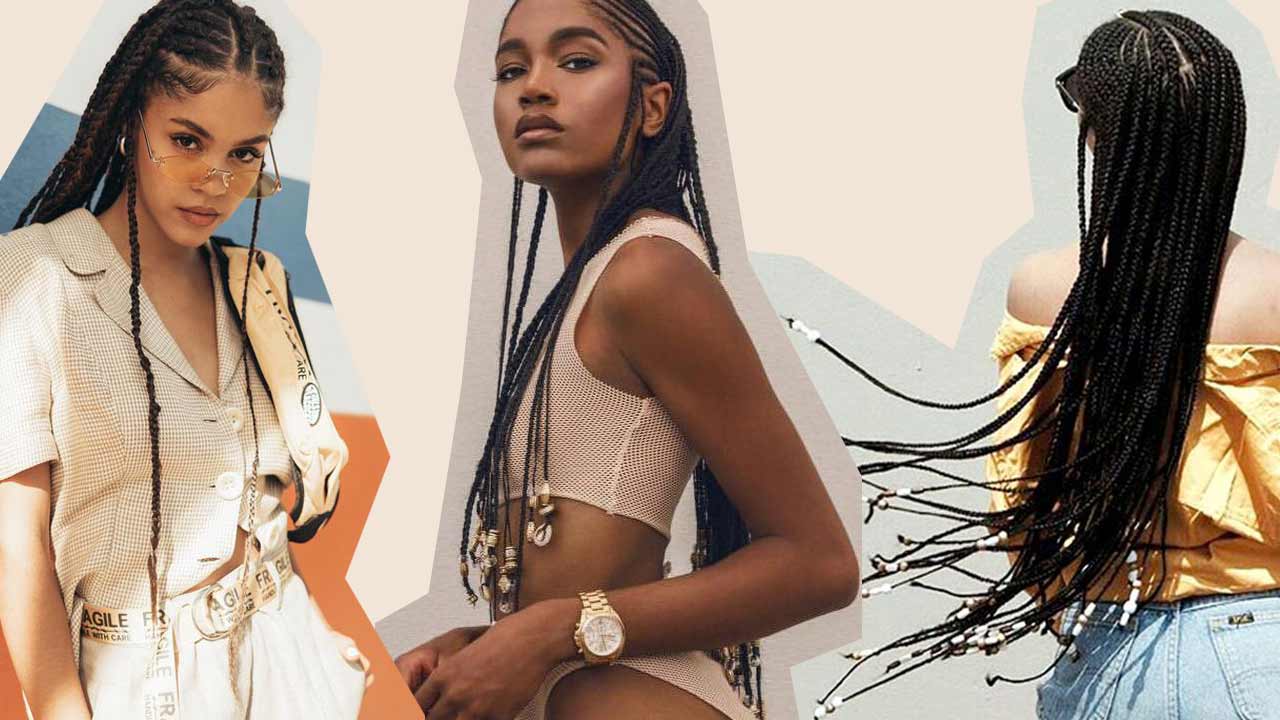Just like in fashion, beauty trends go through cycles of popularity. What’s new to the current generation is old news to its predecessors. Lately, braids have seen a major resurgence in mainstream beauty, mostly from the widely accepted natural hair movement, and reimagined looks on our favorite celebrities and influencers. How do braided hairstyles consistently stand the test of time and come back year after year as the latest trend? Well, it’s all in their roots!
The origin of braids have a pretty complex (and ongoing) history that starts over 30,000 years ago. It’s fascinating that braided hairstyles have maintained cultural relevance ever since their inception. From ancient cornrows to knotless tailbone length box braids, the history of braids is as evolving as its styling possibilities. Keep reading to find out exactly what you need to know about the history of hair braiding.
The origin of braids and braided hairstyles
One of the earliest depictions of braided hairstyles hails from the 3,500 BC Saharan desert. Ancient African cave paintings depicted images of women with intricate braids weaved close to their scalp, or, as we know them now, cornrows. Interestingly enough, braids held multiple purposes and could tell you almost everything about a person’s identity. Braided hairstyles helped to express the age, religious beliefs, family lineage, societal status, and ethnicity of the wearer. During these times, most African women, children and men had their hair braided in some way or form. Passed from generation to generation, it’s evident that the history of hair braiding has deep roots in African culture.
But what about globally? Braids have been spotted in cultures around the world for thousands of years, according to Byrdie:
How Braids Moved Into Modern Culture
The history and importance of braids for people of color is deeply intertwined with the resilience and physiological trauma of colonization and trans-Atlantic slavery. In an effort to strip people of colour of their identity and culture, hair was often completely shaved from their heads. As slavery endured, braids became a practical way to (1) keep hair out of the way while labouring, (2) could last an extended period of time without needing constant care and (3) became a way to communicate important messages, like the path to freedom from bondage. Braided hairstyles were a literal lifeline!
The associations and popularity of braids have varied throughout the 20th and 21st centuries, sometimes being associated with unsophistication, being inappropriate for working environments and just generally lower class.
How braids have evolved into modern culture
Staying put for 6+ hours to get single braids installed is a memory a lot of women share around the world and it’s amazing to think this tradition has been passed down for thousands of years. In modern times, the multipurpose use of hair braiding remains. Braids are a protective style that help to maintain the length, volume and integrity of your hair without having to manipulate it every single day. This reduction in friction on strands gives hair a break and often leads to major growth. Braids are the perfect style to wear on vacation, through a work week or when you want an ultra sleek look with no hassle. Check out our favourite modern braided hairstyles below:
Sleek Cornrows
The evolution of braids all started with cornrows. This neat hairstyle keeps strands close to the scalp and can be as simple or intricate as you desire. Adding hair extensions gives this look extra length and drama.
Tip: When wearing cornrows, apply a small amount of a strong hold gel to your hairline in order to keep baby hairs laid.
Classic Box Braids
Box braids are the quintessential braided hairstyle. Brought back into pop culture by iconic singers Janet Jackson and Brandy in the 90s, single braids are a popular go-to. There are endless possibilities with this style, from styling options, length, colour and adding accents and accessories.
Tip: When installing this style, it’s important to keep stray strands out the way so that your sections stay neat. Using the right tools, like this Application Kit can make this process 10x easier!
Carefree Bohemian (Boho) Box Braids
Carefree bohemian box braids are the perfect option for when you want a less than “perfect” look. Bohemian box braids (or twists) are achieved when strands of curly braiding hair are left unbound. It’s a mix of braided and free-hanging hair. This results in a beautiful, ethereal effect and gives major island vibes.
Tip: When wearing this style, be sure to wrap your hair up at night (especially the ends). Due to the loose hair being left out, this style may be prone to matting and tangling. If that happens, just cut the loose strand and voilà! You now have traditional box braids.
Twisted Hairstyles: Passion Twists
Passion twists are a romantic, easy to install style that has come back into popularity in recent years. Instead of braiding all the way through, twists are braided at the root and then hair is divided into two sections and intertwined all the way down. This creates a lush, voluminous effect that’s easy and less time consuming then traditional braids.
Tip: Dip the ends of your twists into hot water to prevent unravelling and seal in the look!
Fulani Braids
Fulani braids or feed-in braids are characterized by their unique braiding pattern and use of wooden, metal or plastic decorative accents. Kim K. infamously called this popular West African hairstyle “Bo Derek '' braids which sparked widespread controversy on cultural appropriation and if anyone can truly “own” a hairstyle. While this hot topic may be up for debate, after learning the origin of braids, it’s key to understand the impact of cultural erasure and when to give credit when it’s due.
Phewph! The history of braids is a fascinating look into African culture, from past to present. Now that you know the facts, are you ready to try out braids on your own? For first timers, it’s best to find a highly rated salon or stylist near you. Check out their portfolio of work and ensure the results are up to your expectations. Also look to see if they have worked on clients who have a similar hair texture or length to yours. For those who have a bit more experience with braided hairstyles, you may want to venture into doing your own braids at home.
Written by: Taja Jarvis

